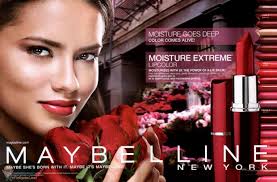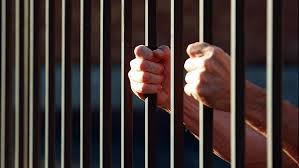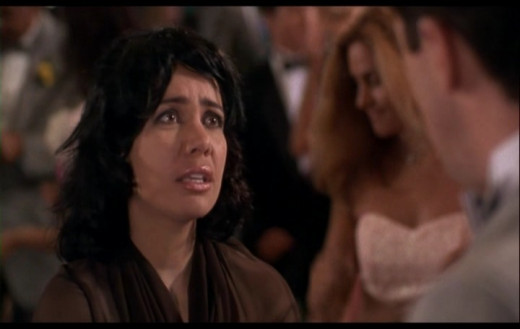ONE is Treated Good or Bad Depending Upon HIS/HER Looks






















BEAUTIES are Adored While UGLIES are Abhorred
Looks are the bases of fairy tales and other allegorical stories. Yes, we are inculcated from childhood by parents and other adult authoritative figures that looks are not everything. We are further told that beauty is only skin deep. We are further instructed that true and sincere people are not so considered about looks but with inner character.
We even were told not to obsess too much about looks for that would make us quite superficial and frivolous. Yes, we were all told that looks really do not matter in the scheme of things. We all were told to not place such a high value on looks but to concentrate on more substantial characters. However, although we were inculcated in the premise of looks being secondary to the more important aspects of a person's substance, we also were told that looks DO matter.
Despite our inculcation that looks do not and should not matter, our society place a very high premium on looks. Not only our postmodern society, but the majority societies from ancient times have placed an importance on looks. Even our mythologies and other historical, allegorical stories use the issues of looks as a descriptive analysis and a moral lesson.
The issue of looks go back to primordial times. Good looks have always be associated with goodness, purity, and other virtues while bad looks had a sinister, even evil connotation. All our heroes and heroines in fairly tales, fiction, and allegories were always in the majority of cases good looking. Heroes and heroines are positive prototypes and they are portrayed as good looking to reinforce their positive characteristics. Conversely, villains, with few exceptions, are portrayed as sinister looking, ugly to downright demonic looking. This characterization is done to make the villain bestial in nature and to make them repugnant and reprehensible.
The issue of looks with its corresponding characteristics have always been with us. It permeates our subjective subconsciousness. Beauty has always been viewed as an elevated and positive thing while ugliness has always been viewed as a lesser and negative thing. Good looking , attractive, and/or beautiful people have always been viewed as angelic more and better than human while less good looking, unattractive, and/or ugly people have always been viewed as brutish, bestial, and/or less than human. For instance, a man or woman who is described as a god/goddess have been characteristically good looking. To say that a man is an Adonis is to say that he is extremely handsome. Conversely to say someone is ugly as sin as to describe a person whose physical appearance is said to repel or otherwise disgust one.
Even babies and toddlers are treated according to how they look. Good looking and/or beautiful babies are talked to and hugged more. People respond more positively to better looking infants and toddlers than their less attractive counterparts. Even good looking babies and toddlers are deemed more angelic and welcoming. People love to approach such babies as their looks beckon people to notice them. Less attractive babies and toddlers receive less interaction from people as their appearance are deemed to be off putting.
Good looking children are treated more positively by teachers and their peers. They are considered to be more personable and confident. They also are believed to be smarter. Even when good looking children commit wrongdoings, they are treated with kid gloves because of their looks. Sometimes such wrongdoings are ignored because it simply is incredible that such a child would commit such acts. Good looking, attractive, and beautiful children have that halo effect, whatever they DO is deemed not so bad. They are the golden children in the eyes of their teachers.
Of course, good looking children have more friends. Other children see good looking children as more friendly, approachable, and personable. These attributes cause other children to gravitate and want to associate with the former. Good looking children are also viewed as more popular because of the aforementioned attributes. Children see good looking children as more enjoyable to be around. Another reason why good looking children are popular is that they are seen as more confident. Naturally, other children are more comfortable with those who they deem as possessing confidence. Because good looking children are viewed more positively, they are also treated more favorably by teachers.
Children who are less good looking tend to be subjected to more differential treatment by teachers and their peers. Less good looking children are punished more and treated more harshly by their teachers than their good looking counterparts. They tend to be castigated by teachers for the slightest offenses or misdemeanors. They are seen as guilty until they are proved innocents. Children who are considered unattractive and even ugly are seen as less intelligent, less friendly, less approachable, and less welcoming. They are also less popular among other children. They are more likely to be ostracized and bullied by other children.
Looks are a strong determinant as to where children belong in the school pecking order. More attractive children tend to belong to the top or more desirable pecking order while less attractive children are relegated to less desirable or even the bottom of the school pecking order. It is natural for more attractive children to only associated with like counterparts and vice versa. Oftentimes, a group status is correlative as to how attractive one is. In the majority of cases, groups that have attractive or good looking children are accorded a higher status than groups that have less attractive or less good looking children. Children also want to associate with more attractive children as they feel that they will held in high regard. Conversely, children want to avoid associating with less attractive as their particular status will decrease.
This correlation between looks and treatment continues throughout elementary, junior high, and high school on an increasing magnified scale. In high school particularly, more attractive teens are highly regarded by their peers and teachers. They are also more datable and considered highly desirable to the opposite gender. They also belong to more clubs, have more friends, and are highly popular. Less attractive teens are less popular and deemed to be less datable. They tend to have less friends. Other teens are loathe to associate with them least their personability factor will decrease by association.
Teachers and peers are not the only ones who treat children on the basis of looks. Families can also treat children favorably or unfavorably based upon their looks. More attractive children are viewed in a more positive light and accorded more preferential treatment by their parents and other family members. Parents oftentimes accord good looking children more privileges and are less likely to punish them more for misdeeds. Good looking children are even placed on a pedestal by parents for their siblings to emulate. Less attractive children tend to be treated more differentially by parents. Besides being the unfavored ones in the family, they can be susceptible to being scapegoated or otherwise being the odd child out in the family. They tend to be punished and chastised more and more harshly by their parents than their more attractive counterparts.
In adulthood, good looking, attractive, and/or beautiful people have opportunities available to them that are less available, even unavailable to their less good looking, less attractive, and ugly counterparts. Studies have repeatedly shown that if two highly qualified people apply for the same position, the more attractive person will be hired over the less attractive one. As in childhood and adolescence, highly attractive people are viewed more positively than those who are not as attractive. Companies and corporations know that more attractive people will increase their marketability and profitabillity. Attractive people will definitely draw more clientele and customers. This is a visceral response on the part of people. People are more willingly to interact with business where more attractive people work than with a business where less attractive people work.
More attractive people are seen as possessing more class and/or elan than their less attractive counterparts. Upscale and more prestigious business entities will hire the more attractive person over the less attractive person because the former will have a more positive image for the company. There is a New York restaurant where all hostesses are extremely attractive, they can aptly be described as model gorgeous. This restaurant clearly does not have less attractive or unattractive appearing hostesses. This restaurant is known as an upscale restaurant and less attractive hostesses will distract from this image.
It is second knowledge that highly visible professions are going to hire good looking people over less good looking people. It is no accident that models, actors, newscasters, and others in highly visible professions are going to be on the beauteous side as that would have the most mass appeal. The public want to see someone who is considered to be perfect as possible, they do not want to see the average person on the covers, in the pages, and/or in the screen, both large and small. Less attractive people in highly visible business are going to be few and far between. There is a double standard as far as the looks parameter goes. Good looking people are going to be perks and be more favored in highly visible professions, particularly in entertainment while less good looking people had better have prodigious or phenomenal talent or that something extra in order to be noticed. The less attractive are going to have to work harder in order to receive any kind of respect and/or nod.
Looks are highly influential as to how criminals are treated in our justice system. Multiple studies have indicated that more attractive individuals receive lesser and more lenient sentences or," are less likely to be convicted than their less attractive counterparts. M. G. Efran in a 1974 study, "The Effect of Physical Appearance on the Judgment of Guilt, Interpersonal Attraction and Severity of Recommended Punishment in Simulated Jury Task," Journal of Research in Personality, confirmed that jurors are more lenient in sentencing attractive individuals than they would be sentencing their less attractive counterparts for the same crime. The History of Forensic Psychology Newsletter showed a 1974 study regarding death penalty cases that more physically attractive defendants charged with killing pedestrians while intoxicated received more lenient sentences while their less attractive counterparts receive harsher sentences.
Yes, it is a fact of life that good looking people are given more liberties and are treated more preferentially than people who are less attractive. Attractiveness level is still used as a means and standard of assessing and judging people for right or wrong. This is a fact of life that cannot be escaped from. This judgment is all around us and permeates our thinking and beliefs.
In summation, looks are a strong determinant as to how people are judged. Good looking people are seen and judged more positively. People associate good looks and beauty with goodness, purity, and wholesome. Attractive people are considered to be beyond mortal, beyond human as they are considered to be perfect or as near perfect as humanly possible. Good looking people are deified in this society in more ways than one. One can say that good looking people are affected by the halo effect bestowed upon them.
Conversely, bad looking people are seen and judged more negatively. People associate bad looks and ugliness with evil, rotten, and being sinister. Unattractive people are considered to be less than human, even bestial. Bad looking people are denigrated in this society in myriad ways. Yes, bad looking and unattractive people are affected by the devil effect-they are presumed guilty and/or wrong until they prove themselves to be otherwise.
Yes, we are visual creatures. For right or wrong, we still judge others by physical appearances. People should be judged by their character and merits, not looks. Of course, that would occur in a more mature and idea society. However, such is not the case in the present state of society. There is a saying that beauty is only skin deep. There is another saying that inner beauty is so much better than outer beauty as the former is permanent while the latter is just transitory and so ever fleeting. Some of the most beautiful people in this world are what so many people would consider to be unattractive, even ugly. There are ugly people in this world who would what one would classify as beautiful.
© 2013 Grace Marguerite Williams








